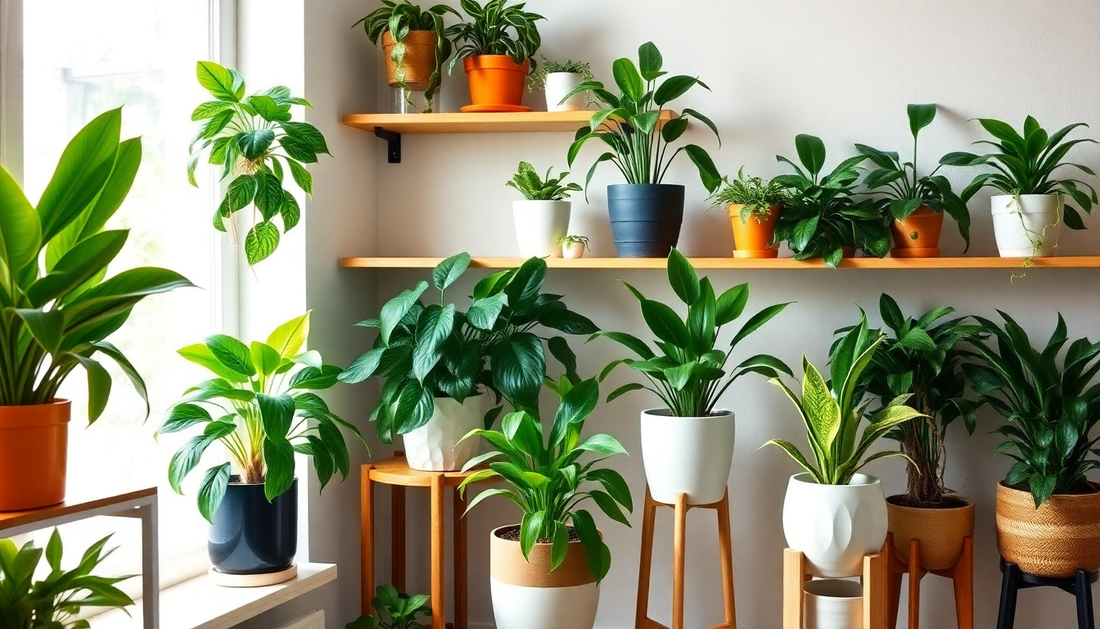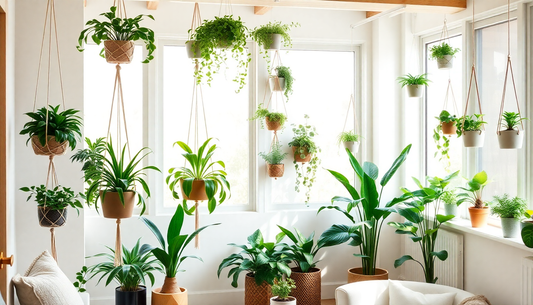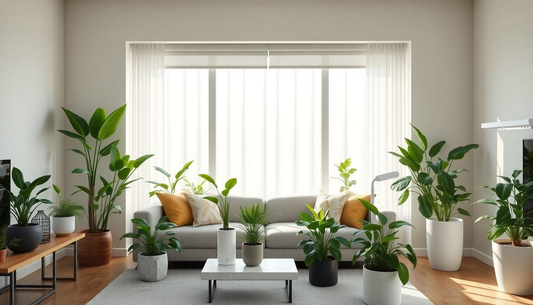
10 Easy Indoor Plants for Beginners
As the world becomes increasingly urbanized, the desire for a connection to nature has never been stronger. For many people, bringing a touch of greenery into their homes through indoor plants has become a way to satisfy this craving. However, the prospect of caring for plants can be daunting, especially for those new to the world of horticulture.
Fortunately, there are a variety of indoor plants that are well-suited for beginners, offering a forgiving and rewarding introduction to the joys of plant parenthood. In this comprehensive guide, we'll explore 10 easy-to-care-for indoor plants that are perfect for those just starting their green-thumbed journey.
The Benefits of Indoor Plants
Before we dive into the specific plant recommendations, it's important to understand the myriad benefits that indoor plants can provide. Beyond their aesthetic appeal, these living, breathing companions can offer a wealth of advantages to both our physical and mental well-being.
Improved Air Quality
Indoor plants are natural air purifiers, capable of removing harmful toxins and pollutants from the air we breathe. They can effectively filter out substances like formaldehyde, benzene, and trichloroethylene, which are commonly found in household products and furnishings.
Stress Reduction
Numerous studies have shown that the presence of indoor plants can have a calming effect on the mind and body. Interacting with plants, whether through watering, pruning, or simply observing their growth, can help reduce stress and anxiety levels, promoting a sense of relaxation and well-being.
Increased Productivity
Surprisingly, indoor plants have also been linked to improved productivity and cognitive function. The presence of greenery in the workplace or home environment can enhance concentration, creativity, and overall work performance.
Boosted Mood
In addition to their practical benefits, indoor plants can also have a positive impact on our emotional state. The simple act of caring for a living, thriving plant can instill a sense of purpose and accomplishment, leading to an improved mood and overall sense of well-being.
10 Easy Indoor Plants for Beginners
Now that we've explored the many advantages of indoor plants, let's dive into the specific recommendations for beginner-friendly options. These 10 plants are known for their resilience, low-maintenance requirements, and ability to thrive in a variety of indoor environments.
1. Succulents
Succulents, such as jade plants, echeverias, and aloe vera, are a popular choice for indoor gardening due to their hardy nature and minimal care requirements. These plants store water in their thick, fleshy leaves, making them highly adaptable to fluctuations in watering and light levels.
2. Snake Plant (Sansevieria)
Also known as mother-in-law's tongue, the snake plant is a resilient and versatile indoor plant that can tolerate a wide range of conditions. It's known for its striking, upright leaves and its ability to purify the air by removing toxins like formaldehyde and benzene.
3. ZZ Plant (Zamioculcas zamiifolia)
The ZZ plant is a low-maintenance, drought-tolerant option that can thrive in a variety of lighting conditions, from bright, indirect light to low-light areas. Its thick, waxy leaves and rhizome-based root system make it a hardy and forgiving choice for beginners.
4. Pothos
Pothos, often referred to as the "devil's ivy," is a trailing vine plant that is incredibly easy to care for. It can tolerate a wide range of light conditions and is known for its ability to purify the air and remove formaldehyde.
5. Chinese Evergreen (Aglaonema)
Chinese Evergreens are a diverse group of plants that come in a variety of colors and patterns. They are relatively low-maintenance, able to tolerate a range of light conditions, and can even adapt to the dry air of many indoor environments.
6. Peace Lily (Spathiphyllum)
The peace lily is a flowering plant that is known for its ability to indicate when it needs water. When the leaves start to droop, it's a sign that the plant needs to be watered. Peace lilies also help to remove toxins like benzene and trichloroethylene from the air.
7. Philodendron
Philodendrons are fast-growing, trailing plants that are perfect for hanging baskets or shelves. They come in a variety of leaf shapes and colors, and they are relatively easy to care for, requiring moderate watering and indirect light.
8. Dracaena
Dracaena plants, such as the corn plant and the dragon tree, are known for their striking, sword-like leaves and their ability to thrive in a range of lighting conditions. They are also effective at removing formaldehyde and xylene from the air.
9. Monstera Deliciosa (Swiss Cheese Plant)
The Monstera Deliciosa, or Swiss Cheese Plant, is a popular choice for its large, distinctive leaves and its ability to adapt to a variety of indoor environments. It's a relatively low-maintenance plant that can tolerate a range of lighting conditions.
10. Calathea
Calathea plants, also known as prayer plants, are known for their vibrant, patterned leaves that move throughout the day in response to changes in light. They require moderate watering and humidity, making them a great choice for beginners who are willing to provide a bit more care.
Caring for Your Indoor Plants
Now that you've been introduced to 10 easy-to-care-for indoor plants, it's time to dive into the basics of plant care. While each species has its own unique needs, there are some general guidelines that can help ensure the success of your indoor garden.
Watering
Proper watering is one of the most critical aspects of indoor plant care. Overwatering can lead to root rot, while underwatering can cause the plant to wilt and eventually die. It's important to pay attention to the specific watering needs of each plant, as some, like succulents, prefer to dry out between waterings, while others, like peace lilies, prefer more consistent moisture.
Lighting
The amount of light your indoor plants receive is also crucial to their health and growth. Most of the plants on our list prefer bright, indirect light, but it's important to research the specific lighting requirements for each species. Avoid placing plants in direct sunlight, as this can scorch the leaves.
Humidity
Many indoor plants thrive in humid environments, which can be a challenge in the dry air of many homes and offices. To increase humidity, you can mist your plants regularly, use a pebble tray, or invest in a small humidifier.
Fertilizing
Fertilizing your indoor plants can help promote healthy growth and vibrant foliage. Look for a balanced, water-soluble fertilizer and follow the instructions on the label for proper application.
Repotting
As your plants grow, they may need to be repotted to accommodate their expanding root systems. Watch for signs of root crowding, such as slow growth or roots emerging from the drainage holes, and repot your plants as needed, typically every one to two years.
Conclusion
Bringing the beauty and benefits of nature into your indoor spaces has never been easier, thanks to the wide variety of low-maintenance, beginner-friendly plants available. By incorporating these 10 easy-care options into your home or office, you can enjoy the countless advantages of indoor greenery while honing your skills as a plant parent.
Remember, the key to success is to start small, research the specific needs of each plant, and be patient as your indoor garden grows. With a little care and attention, you'll be well on your way to creating a thriving, verdant oasis in your own living or work space.
So why not take the first step and add a touch of green to your life? Your mind, body, and spirit will thank you.


